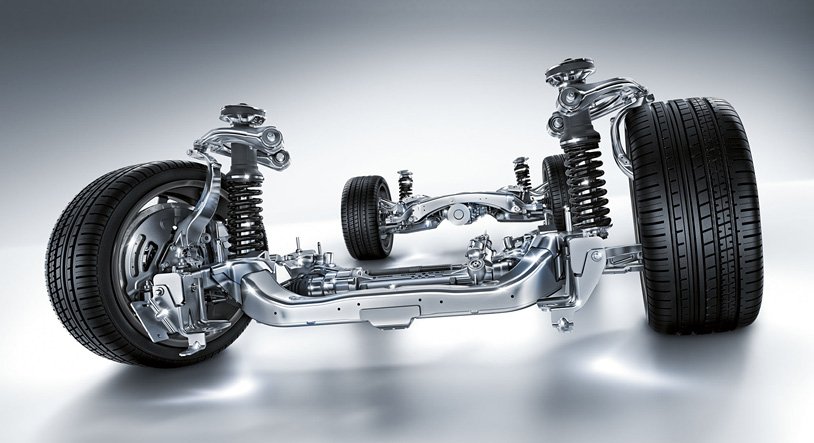Adaptive chassis on cars
Content
An adaptive chassis is a combination of many sensors, components and mechanisms that adjust the parameters and stiffness of the suspension to the driver’s driving style and simplify the control of the car. The essence of the adaptive chassis is to maintain speed characteristics at an optimal level, taking into account the personal habits of the driver.
The modern adaptive chassis is primarily focused on ensuring safety and ease of movement. Although the driver can contact service center specialists to make the necessary adjustments in the system to be able to select an aggressive dynamic driving mode. At the request of clients, FAVORIT MOTORS Group masters can perform any adjustments to the adaptive chassis system so that the owner has the opportunity to maximize his individual driving style on any road.
Elements of the adaptive suspension system
Electronic control unit
 The core of the system is an electronic control unit, which directly influences the chassis settings, based on the indicators of sensors about the current driving conditions of the car and driving style. The microprocessor module analyzes all indicators and transmits control impulses to the suspension system, which adjusts the shock absorbers, stabilizers and other suspension elements to specific conditions.
The core of the system is an electronic control unit, which directly influences the chassis settings, based on the indicators of sensors about the current driving conditions of the car and driving style. The microprocessor module analyzes all indicators and transmits control impulses to the suspension system, which adjusts the shock absorbers, stabilizers and other suspension elements to specific conditions.
Adjustable shock absorbers
The chassis itself has an updated design. Thanks to the use of MacPherson strut suspension on cars, it became possible to transfer the load separately to each shock absorber. In addition, fastening spots made of alloys using aluminum can significantly reduce the degree of noise and vibration in the cabin while driving.
Shock absorbers are adjusted in one of two ways:
- by using solenoid valves;
- using magnetic rheological fluid.
The most common option is the use of solenoid-type control valves. Such suspension mechanisms are used by such car manufacturers as: Opel, Volkswagen, Toyota, Mercedes-Benz, BMW. Under the influence of current, the cross section of the valve changes, and, therefore, the stiffness of the shock absorber. As the electric current decreases, the cross-section increases, softening the suspension. And as the current increases, the cross-section decreases, which increases the degree of suspension rigidity.
Adaptive chassis with magnetic rheological fluid are installed on Audi, Cadillac and Chevrolet cars. The composition of such a working fluid includes metal particles that react to the magnetic field and line up along its lines. There are channels in the shock absorber piston through which this fluid passes. Under the influence of a magnetic field, particles increase resistance to fluid movement, which increases the rigidity of the suspension. This design is more complex.
Areas of application of the adaptive chassis system in modern automotive industry
 To date, the adaptive chassis is not installed on all brands of cars. This is due to the fact that to ensure the operation of the system, it is necessary to radically reconsider the design of the chassis itself and the connection with the control elements. At the moment, not every automaker can afford this. However, the use of an adaptive chassis in the near future is inevitable, since it is this system that allows the driver to squeeze the maximum capabilities out of the car without compromising comfort and safety.
To date, the adaptive chassis is not installed on all brands of cars. This is due to the fact that to ensure the operation of the system, it is necessary to radically reconsider the design of the chassis itself and the connection with the control elements. At the moment, not every automaker can afford this. However, the use of an adaptive chassis in the near future is inevitable, since it is this system that allows the driver to squeeze the maximum capabilities out of the car without compromising comfort and safety.
According to experts from FAVORIT MOTORS Group, the development of adaptive suspensions is aimed at providing unique settings for each wheel at each individual moment in time. This will improve the vehicle's handling and stability.
FAVORIT MOTORS car service technicians have all the necessary knowledge and also have high-tech diagnostic equipment and specialized tools at their disposal. You can be sure that the adaptive suspension of your car will be repaired efficiently and quickly, and the cost of repair will not negatively affect the family budget.
